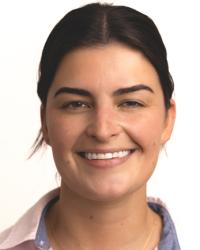Anesthesiology
Welcome to the Anesthesiology Service at the UC Davis Veterinary Medical Teaching Hospital, where we are dedicated to our mission of educating future veterinarians and residents in the discipline and practice of anesthesiology and providing superior clinical service to our patients and referring veterinarians. The VMTH is the only veterinary hospital in Northern California with multiple board-certified anesthesiologists. We manage most of the patients that are anesthetized at the VMTH and provide dedicated attention to each patient before, during and after anesthesia. Our faculty members have all completed advanced training in veterinary anesthesiology and supervise the care provided by residents, technicians and senior veterinary students. We are also dedicated to the management of perioperative pain and use many different approaches and collaborate with the primary clinicians to ensure the comfort of our patients.
Frequently Asked Questions
- Who supervises the anesthetic management of my animal?
- The Anesthesiology Service is supervised by faculty veterinarians who have specialized in anesthesia and pain management. There are usually two such individuals present during the day and they review all the anesthetic protocols and check on each patient frequently. If you would like to talk directly with one of the anesthesiologists about the anesthetic management of your animal, please ask your clinician to contact us.
- Who will be doing the anesthetic and taking care of my animal?
- The Anesthesiology Service employs Registered Veterinary Technicians who do many of the anesthetics. These are individuals who have specialized in small animal anesthesia and some of our technicians have obtained specialized qualifications in this area. Since this is a teaching hospital, some patients will be managed by our residents - veterinarians who are specializing in anesthesia and who are training with the faculty at the VMTH and some patients will be anesthetized by veterinary students who are in their fourth year of their veterinary education. All anesthetized patients are under the supervision of veterinarians with specialist training in anesthesia.
- What information is needed about my animal before anesthesia?
- As for any clinician, it is important that the anesthesiologist have as much information about the patient as possible. It is important for the anesthesiologist to understand what is wrong with the animal, what treatments it is receiving, and what procedure is going to be carried out. Many of the drugs that are used in anesthesia cause some degree of depression of the heart and lungs. Therefore, we focus on these organs in particular, but the liver and the kidneys are also important in removing the drugs that are used, as well as good health after anesthesia. In order to better understand the functional condition of these organs, the anesthesiologist may ask for further diagnostics such as radiographs of the chest, ultrasound of the heart, or blood tests to determine liver and kidney function or blood coagulation. Because of drug interactions, it is important for the anesthesiologist to know if an animal is being treated with any drugs or herbal therapies so that the anesthetic can be tailored to the individual patient. Any previous history of problems associated with anesthesia should be mentioned to the clinician who admits your animal to the hospital.
- What care will my animal receive during anesthesia?
- At least one person, either a veterinarian (resident), anesthesia technician or senior veterinary student, will be dedicated to the care of your pet from the time it first receives the drugs until it is recovered from anesthesia. Typically, the first anesthetic-related drugs animals receive are sedatives and pain medication. Your animal will then have a venous catheter placed, through which it will receive intravenous fluids and anesthetic drugs. A breathing tube is then placed and the animal is connected to an anesthetic machine that delivers the anesthetic gas which keeps your animal anesthetized. During anesthesia, we routinely monitor heart and breathing rates, blood pressure, and body temperature at frequent intervals. The VMTH is well equipped with anesthetic equipment and monitoring devices that we will use as appropriate to ensure the best care for every patient.
- How do you manage pain associated with the treatment of my animal?
- The Anesthesiology Service uses a comprehensive array of drugs and techniques to manage animal pain. Animals are usually given pain-killing drugs (analgesics) before the procedure, with the expectation that preventing pain is more effective than waiting until the animal feels pain before treating it. Before the surgery begins, we may use local anesthetics to block the pain signals coming into the spinal cord and brain during surgery. These drugs may be given close to the surgical site or may be injected around nerves or around the spinal cord itself (epidural injection). We may give other analgesics during surgery and then most patients will receive two different types of analgesic at the end of surgery - one type to help control the immediate intense pain after surgery, and one to provide longer lasting analgesia. Animals are watched on a regular basis after surgery, and are provided with further analgesics if needed.
- Why does my animal have hair clipped from several sites on his/her legs?
- During anesthesia, we require that we have at least one intravenous access in each patient. In some animals, it may be necessary to clip more than one leg because of difficulty getting a catheter into the vein or because we need to place more than one catheter (some drugs or fluids we may need to give your pet cannot go together). We may also clip areas on the legs, ear, or tail in order to place a catheter in an artery so that we can monitor blood pressure and obtain blood samples for monitoring purposes. An area over the back may also be clipped if we have done an epidural injection to help with pain management.
- How long will it take my animal to recover after anesthesia?
- Most young healthy animals recover very quickly after anesthesia, and it is often difficult to tell that they had been anesthetized within a few hours of the procedure. However, when your animal is anesthetized for a long time, is older, or is ill at the time of anesthesia, recovery may take longer and it may still be obvious that the animal is not back to itself for 24 hours or more. Some of this delayed recovery may be due to the anesthetic drugs, but some may also be due to the underlying condition that made the original procedure necessary. Though you may only meet one resident and one student, your pet is under the care of the entire service, with overall supervision provided by faculty veterinarians.
- How do the drugs used in veterinary anesthesia compare with those used to anesthetize people?
- Mostly, they are the same drugs. We use some drugs that are not commonly used in people because they work well in animals and have stood the test of time as being helpful for our patients. The frequency with which we use some drugs is different than for human patients, but for the most part, the drugs were originally developed for people and have been adapted for use in animals.
- How do you schedule the animals for anesthesia on any particular day?
- Any clinician who wants to have an animal anesthetized at a particular time provides our service with a request for the preferred time and date. At 3 p.m. on the day before the procedure, we look at all the requests and assign our residents, technicians and students to the patients. This allows them to look at the animal before the end of the day and to find out if we have all the necessary information. Once the assigned individual has had time to look at the patient and the patient's record, he/she writes up a plan for that animal and consults with one of the faculty anesthesiologists about this plan. The anesthesiologist may ask for further information or talk directly with the clinician involved to ensure that the planned approach is the best for the animal.
- Why do you not want an animal fed before anesthesia?
- When we anesthetize an animal, we insert a tube into the airway so that nothing can go into the lungs during anesthesia. This is essential because an animal will lose its own ability to protect its airway once it is anesthetized. However, if an animal regurgitates (food comes up from the stomach into the mouth) before we can get the tube in place, the animal could die from inhaling that material into its lungs. Withholding food from the animal for 12 hours prior to surgery will help ensure that the animal has an empty stomach and minimize the risk of regurgitation or aspiration. Water can be made available until close to the time of anesthesia since it poses minimal risk even if it is regurgitated. Healthy adult animals will suffer no untoward effects from having food withheld for 12 hours. Young puppies, kittens, and animals with stringent feeding requirements, like diabetic pets, will be dealt with on a case-by-case basis.
- Is my animal too old to be anesthetized?
- Not necessarily. Age, in and of itself, is not a disease but many older patients have trouble with their hearts and kidneys. We look at all the health issues our older patients are facing and assess them individually to see if it is in their best interest to be anesthetized and undergo the procedure and determine how to anesthetize each patient to minimize risks. We have anesthetized cats and dogs that have been over 20 years old, and they have done well following the procedure.
- Why should my animal be in the hospital for the night before it is anesthetized?
- This helps the animal to get somewhat acclimated to the hospital environment before undergoing anesthesia and surgery. Importantly, it is also to allow the anesthesia personnel to examine the animal and conduct additional tests that might be necessary, so we can come up with an appropriate plan for the next day when it is to be anesthetized.
- How safe is anesthesia in animals?
- We think it very safe, but the drugs and techniques do carry some risks. It is important to recognize that there are many things that can go wrong during anesthesia. A good history and thorough examination of your animal helps us determine the most appropriate anesthetic plan. We monitor all patients closely and use advanced technology to try to understand what is happening to the animal during the anesthetic in order to minimize the risk and then treat problems early, before they become life threatening. Our main goal is to anticipate the things that might go wrong and be prepared for them so that we can prevent problems.
- I have heard that my particular breed is very sensitive to anesthesia. How do you handle this?
- We hear this about many breeds, and for the most part, this has not turned out to be the case. However, we have many approaches that can be used for a specific patient. If there is a known or suspected sensitivity to a particular drug, we can use something else. We are very interested in this issue and are more than happy to look at any information you can provide on the concerns for your breed of animal.
Faculty

Joao Soares, MV, MSc, DSc, DACVAA
Associate Professor
Co-Chief of Service

Alessia Cenani, DVM, MS, DACVAA, CVA
Associate Professor
Co-Chief of Service

Linda Barter, BVSc, MVSc, BSc(vet), PGCert(VetEd), PhD, DACVAA
Professor
Anesthesia Residency Program Coordinator

Robert Brosnan, DVM, PhD, DACVAA
Professor

Amandeep Chohan, BVSc, AH, MVSc, MS, DACVAA
Associate Professor

Harriet Flynn, MVB, DACVAA
Assistant Professor

Marcela Machado, MV, MSc, MS, DACVAA
Assistant Professor

Bruno Pypendop, DrVetSci, DrMedVet, DACVAA
Professor
Executive Associate Dean

Manuel A. Fernandez Barrientos, DVM, AFHEA, MRCVS
Staff Veterinarian

Wei-Chen (Bernice) Kuo, DVM, MS, CVA
Staff Veterinarian

Pauline Wong, DVM, DACVAA
Staff Veterinarian
House Officers

Scott Brovarney, DVM
Resident I

Benjamin Chen, DVM
Resident II

Stephanie Le, DVM
Resident I

Shane Mart, DVM
Resident III

Katy Nelligan, DVM
Resident II

